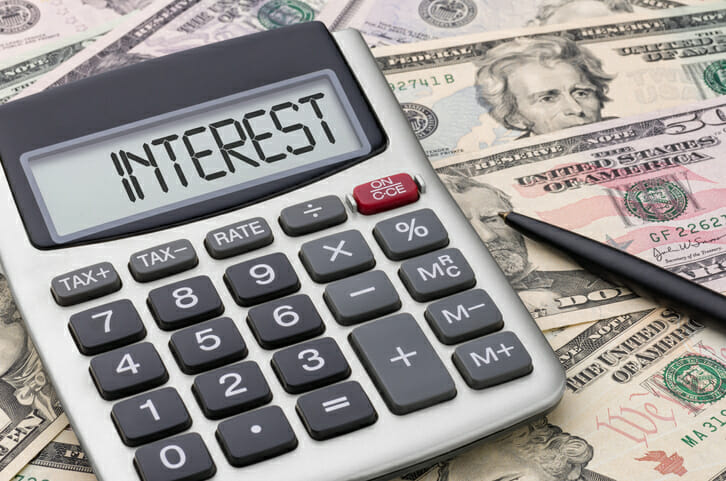2024 brought great change from the Federal Reserve with three rate cuts throughout the year. Savings rates lowered in response, leaving many to wonder when will savings interest rates go up? Still, savings rates continue to outpace inflation with the best savings rates exceeding 4%, while inflation by comparison is at 2.4% in May 2025. With rates expected to stay roughly the same, it is a good time to consider a high-yield savings account to maximize your earnings and build wealth faster.
A financial advisor can help you make best use of interest-bearing accounts in your financial plan.
How Savings Interest Rates Rise
The Federal Reserve does not directly control savings account rates, but actions of the central bank’s Federal Open Market Committee (FOMC) do have a powerful effect on the rates banks and credit unions pay to depositors. The process starts when the FOMC sets a target for the fed funds rate, which is the rate charged to its member banks for overnight loans.
If the target rate rises, as it has in recent months as the Fed has sought to raise borrowing costs and stall inflation, banks have to pay more for loans from the central bank. To maintain profits, the banks begin charging higher rates for loans. This increase usually happens quickly after a fed interest rate hike.
It often takes longer, especially with the major banks, for savings account holders to start receiving higher rates. Eventually, banks begin competing to attract deposits so they will have money to make loans. However, not all banks raise savings rates at the same time, or do so at the same pace.
Online banks are often first to increase rates, since without physical facilities they have lower overhead costs. Local banks and credit unions are sometimes next to raise rates, with the biggest banks often bringing up the rear.
Current Savings Interest Rates

For most of the period during which the Fed hiked the fed funds rate from 1% in January 2022 to 1.75% in July 2022, savings accounts barely responded. The national average savings rate calculated by the Federal Deposit Insurance Corporation (FDIC) was 0.06% in January and by June had risen only to 0.08%.
However, soon savings institutions started catching up. Chart-topping rates were as much as 20 times the national average only a few weeks earlier in mid-June, highlighting how rapidly the most attractive savings rates have increased.
Fast forward two years, and the fed funds rate has seen several rate increases. While the funds rate stays within the 4.25% – 4.50% range, the national savings rate remains at 0.06%. Meanwhile, the best high-yield savings accounts top 4% from banks like NexBank and Western Alliance Bank.
Certificates of deposit (CDs) have been even more responsive to Fed rate moves. They saw a high in 2023 but still remain competitive, with the best CD accounts giving a 4% APY from popular banks like Capital One and Synchrony.
When Will Savings Interest Rates Go Up?
Savings account rates typically follow the Federal Reserve’s federal funds rate, which remained at 4.25–4.50% as of mid‑June 2025. While top online savings accounts are already offering rates over 4%—such as Tab Bank at 4.26%—most traditional banks remain below that benchmark.
The timing for broader rate increases depends on how quickly banks adjust to Federal Reserve moves. Online banks, with their lower overhead costs, usually raise their rates first. Regional institutions and credit unions follow next, while larger national banks tend to be slower. Historically, major banks may lag by several weeks or months before aligning with Fed policy adjustments.
Looking ahead, economists predict additional rate cuts but nothing drastic. During 2025, rates have held fairly steady but that could change with the Fed forecasting two separate rate cuts, depending on inflation and other economic factors.
Should rate cuts occur, savings rates may soften over time, but current trends suggest yields are likely to remain elevated compared to recent years.
Other Interest Strategies
Savings accounts and CDs are not your only options, as there are other safe investment vehicles offering attractive rates. For example, Series I Savings Bonds are guaranteed by the U.S. Treasury and are currently paying 3.98%.
The Series I bond rate, which is linked to inflation, is adjusted every six months. This means that as inflation rises, so does the I bond interest. Each investor is limited to buying $10,000 worth, but the bonds are free from state and local taxes. You can easily buy them online.
CD ladders offer another way to safely make the most of interest during a period of rising rates. By purchasing multiple CDs of different terms, an investor ensures access to cash at regular intervals in the future to invest in certificates that, if current trends continue, will likely be paying higher rates than today.
Bottom Line

Savings account interest rates have finally begun responding to the increase in borrowing costs brought about by inflation-countering policies at the Federal Reserve. Today, the best savings accounts top 4% and are likely to continue tracking the Federal benchmark as further cuts are expected in late 2025.
Additional Savings Tips for Beginners
- A financial advisor can help you make decisions about saving and interest that will advance your financial objectives. Finding the right financial advisor that fits your needs doesn’t have to be hard. SmartAsset’s free tool matches you with vetted financial advisors who serve your area, and you can have a free introductory call with your advisor matches to decide which one you feel is right for you. If you’re ready to find an advisor who can help you achieve your financial goals, get started now.
- Savings accounts are part of most well-thought-out financial plans and are especially suited for emergency funds. However, interest-bearing accounts generally don’t pay enough to keep pace with inflation. For returns that are likely to beat inflation, most investors turn to the stock market.
Photo credit:©iStock.com/aquaArts studio, ©iStock.com/aquaArts studio, ©iStock.com/Zerbor
